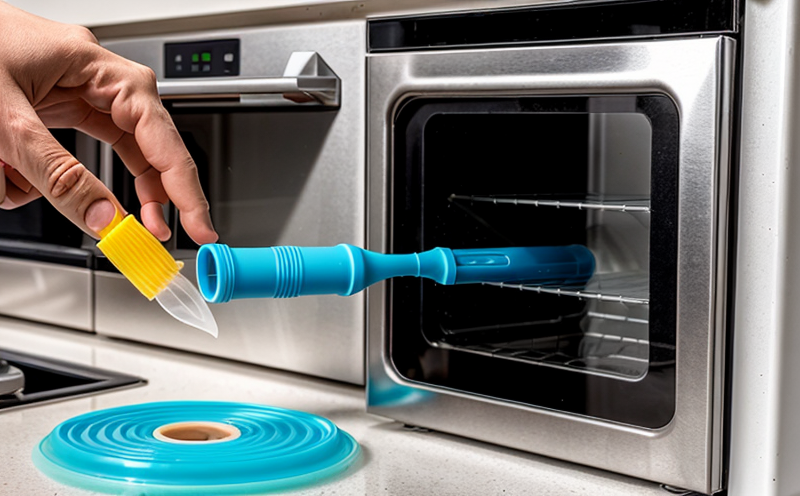ISO 21306 Identification Testing of Household Plastic Materials
The International Organization for Standardization (ISO) has developed ISO 21306, a comprehensive standard that provides the identification and characterization methods for household plastic materials. This testing is crucial in ensuring product safety, compliance with regulations, and meeting consumer expectations regarding the quality and integrity of household goods.
Household plastics are diverse, including polyethylene, polypropylene, polystyrene, PVC, and many others used in items like containers, packaging, electronics, and furniture. Identifying these materials accurately is essential for various stakeholders, from manufacturers to regulatory bodies. ISO 21306 offers a standardized approach that ensures reliable results across different environments and conditions.
The testing process involves several key steps, including the preparation of samples, selection of appropriate identification techniques, and analysis using advanced instrumentation. Sample preparation is critical; it must be representative of the product to ensure accurate results. Techniques such as FTIR (Fourier Transform Infrared Spectroscopy), DSC (Differential Scanning Calorimetry), and TGA (Thermogravimetric Analysis) are commonly used.
The identification process aims to determine not only the base polymer but also any additives, fillers, or modifiers present. This information is vital for understanding the material's properties, such as thermal stability, mechanical strength, and chemical resistance. For instance, PVC may contain plasticizers that influence its flexibility and durability. Accurate identification helps in optimizing product design and ensuring it meets market requirements.
Once identified, the materials are tested under controlled conditions to assess their performance characteristics. This includes determining melting points, glass transition temperatures, and thermal stability. These properties are critical for understanding how the material will behave in real-world applications. For example, a plastic container needs to withstand high temperatures during sterilization without degrading.
The results of ISO 21306 testing provide valuable insights into the quality and reliability of household plastics. This information is essential for several reasons:
Scope and Methodology
The scope of ISO 21306 covers the identification and characterization of household plastic materials. This includes determining the base polymer, additives, fillers, and modifiers present in the material. The standard provides detailed procedures for sample preparation, selection of appropriate techniques, and analysis using advanced instrumentation.
Sample preparation is crucial; it must be representative of the product to ensure accurate results. Techniques such as FTIR (Fourier Transform Infrared Spectroscopy), DSC (Differential Scanning Calorimetry), and TGA (Thermogravimetric Analysis) are commonly used. These techniques provide a non-destructive means of analyzing materials without altering their properties.
FTIR is particularly useful for identifying the functional groups present in the polymer, which can help determine the type of plastic. DSC measures heat flow as a function of temperature and provides information about melting points and glass transition temperatures. TGA monitors weight changes during heating, which helps identify additives or fillers that might affect performance.
The methodology outlined in ISO 21306 ensures consistent and reproducible results across different laboratories. This is achieved by providing clear guidelines for sample preparation, instrument calibration, and data interpretation. The standard also includes acceptance criteria to ensure that the test results meet specified quality standards.
By following these standardized procedures, laboratories can provide reliable and accurate identification of household plastics, ensuring compliance with regulatory requirements and meeting market expectations.
Why Choose This Test
The ISO 21306 Identification Testing is essential for several reasons. It ensures that household plastic materials are accurately identified and characterized, which is crucial for product safety and compliance with regulations. Accurate identification helps in optimizing product design and ensuring it meets market requirements.
By choosing this test, stakeholders can benefit from the following:
Quality and Reliability Assurance
The quality and reliability of ISO 21306 identification testing are paramount. This is achieved through rigorous calibration, validation, and accreditation processes. Laboratories that perform this testing adhere to strict quality management systems (QMS) and undergo regular audits to ensure compliance with international standards.
Calibration involves the systematic measurement of instruments against known standards to ensure accurate results. Validation ensures that the methods used are robust and reproducible. Accreditation by recognized bodies, such as ISO/IEC 17025, guarantees that laboratories meet stringent technical requirements and can be trusted to provide reliable test results.
The use of advanced instrumentation further enhances the accuracy and precision of the testing process. Instruments like FTIR, DSC, and TGA are calibrated regularly to ensure they operate within specified tolerances. This ensures consistent and reproducible results, which is critical for maintaining quality and reliability.
Regular audits and internal quality control checks further reinforce the commitment to excellence in ISO 21306 identification testing. These checks ensure that all processes are followed correctly and that any deviations from standard procedures are promptly addressed.





